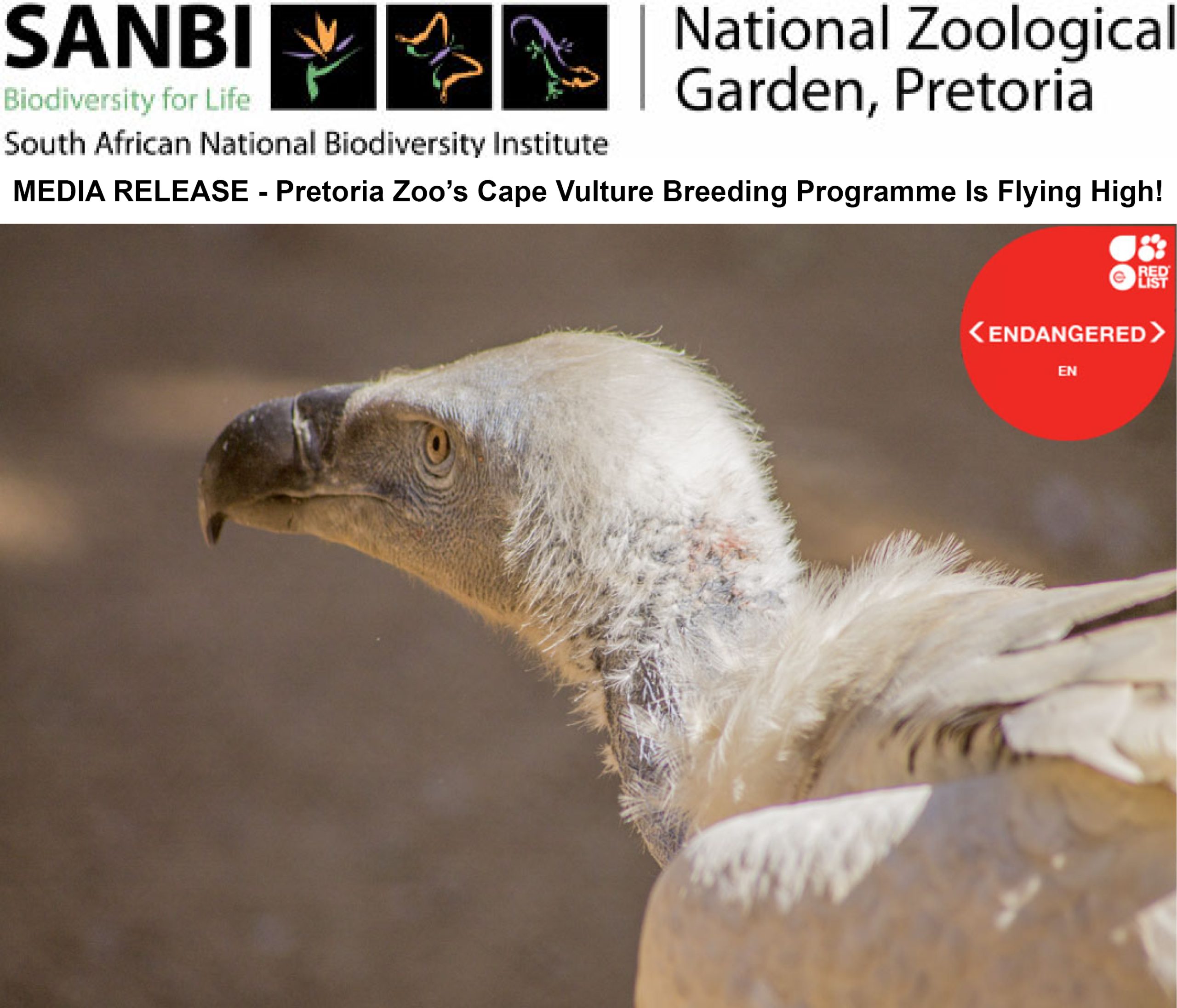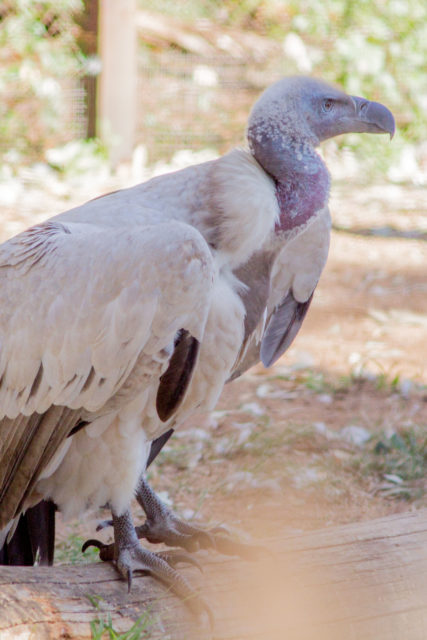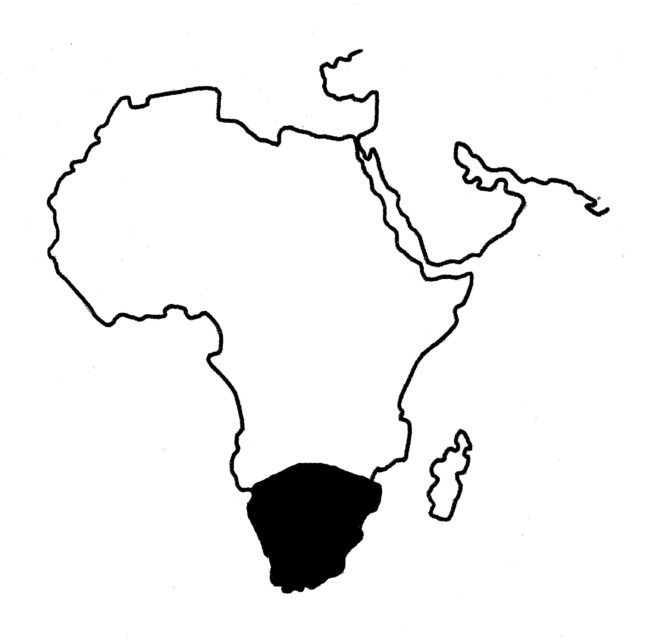Supporting conservation work and safeguarding the future of the species
The National Zoological Garden (NZG) in Pretoria is tremendously proud of the success of its Cape vulture breeding programme.
Right now, there are two vulture chicks on the nest. The chicks hatched in the second half of July, and are doing splendidly. They are part of a captive breeding initiative that aligns with the recently published Draft Biodiversity Management Plan that aims to safeguard the species in its natural habitat.
The NZG has been breeding Cape vultures (Gyps coprotheres) successfully since 1996. These birds are native to southern Africa, primarily inhabiting regions in South Africa, Lesotho, Botswana, and parts of northern Namibia. The Cape vulture is classified as vulnerable according to the IUCN Red List categories.
Since 1997, the NZG has achieved successful breeding, with five pairs of birds currently incubating, hatching, and raising one to three chicks every breeding season. Nesting material is provided on a weekly basis for building and lining nests during the breeding season. Eggs are entrusted to pairs for incubation, hatching, and rearing. Pairs tending chicks are fed twice a day. The rest of the colony is fed twice weekly. Nest inspections are conducted every other day to monitor egg laying.
Tracy Rehse, Conservation Director at the NZG, says she and her colleagues at the zoo staff take great pride in the success of the breeding programme. “It’s been a cornerstone of our conservation efforts since 1996. Through our dedicated work, we are contributing to the protection of this vulnerable species and its natural habitat in Southern Africa. Every chick hatched is a beacon of hope for the future of the Cape vulture.”
KINGDOM: Animalia (Animals)
PHYLUM: Chordata (Possessing a notochord)
CLASS: Aves (Birds)
ORDER: Accipitriformes (Diurnal birds of prey)
FAMILY: Accipitridae (Old world vultures)
SUB-FAMILY: Aegypiinae (Vultures)
GENUS: Gyps (Typical vultures)
SPECIES: Gyps coprotheres (Cape Vulture)






